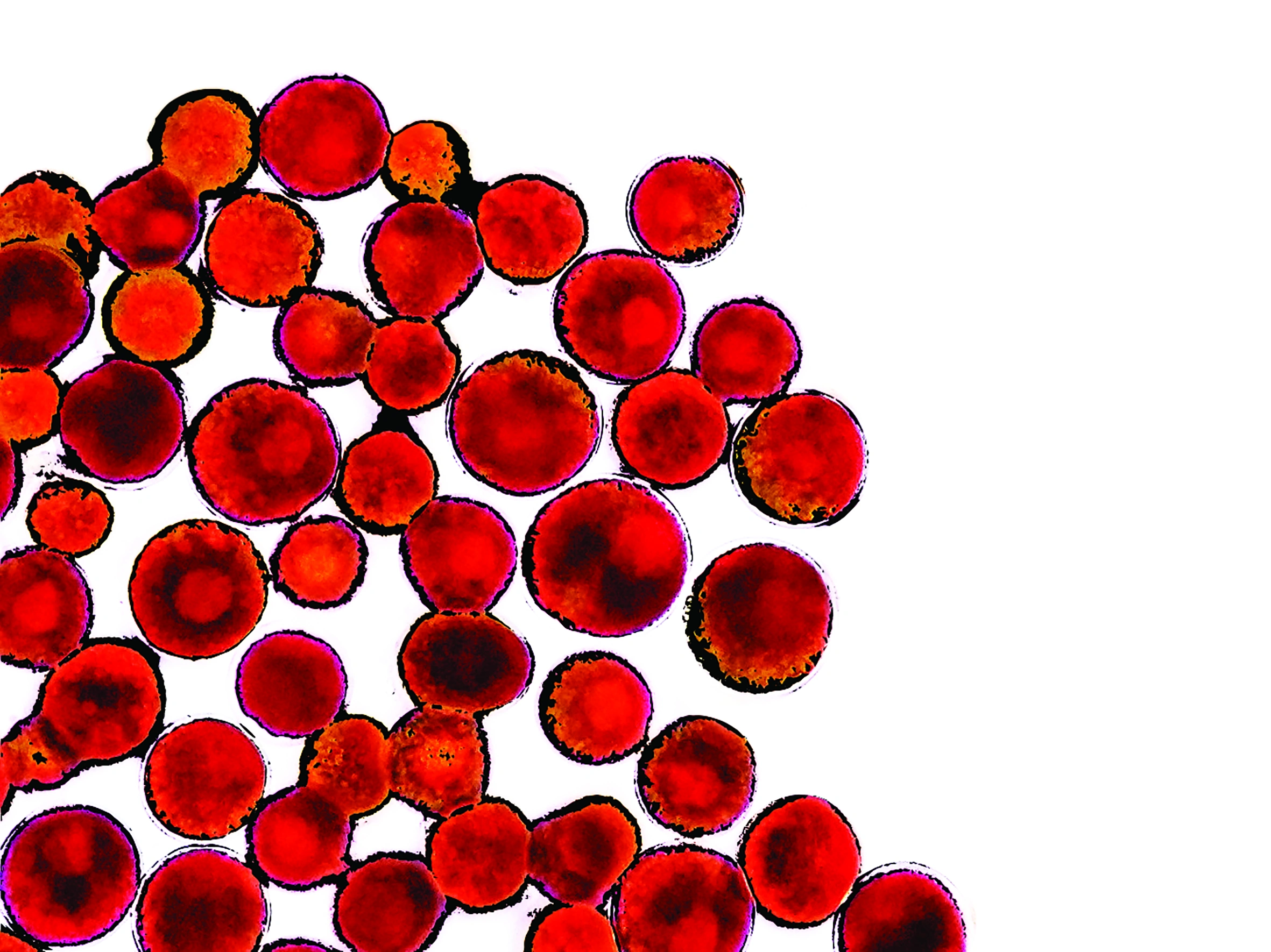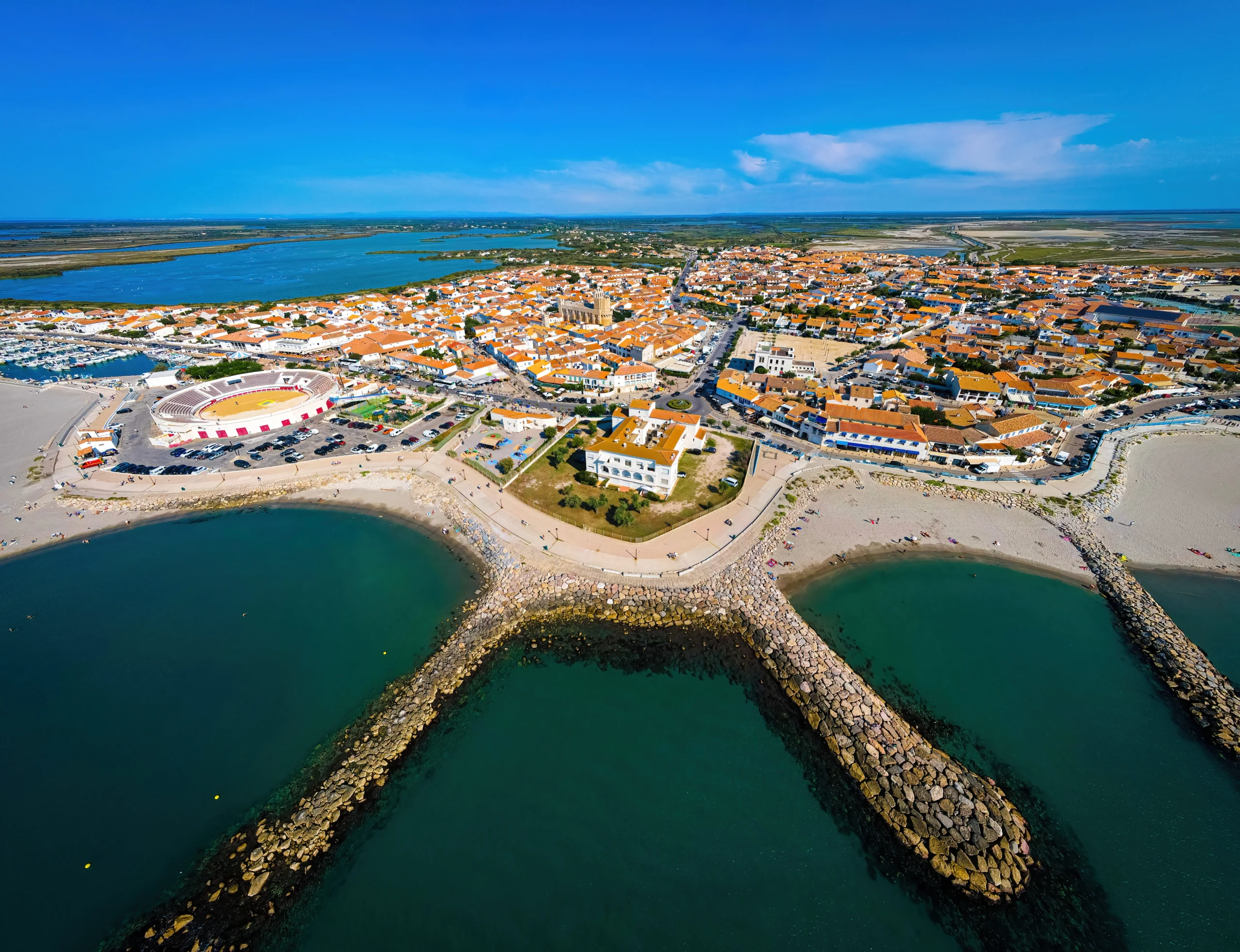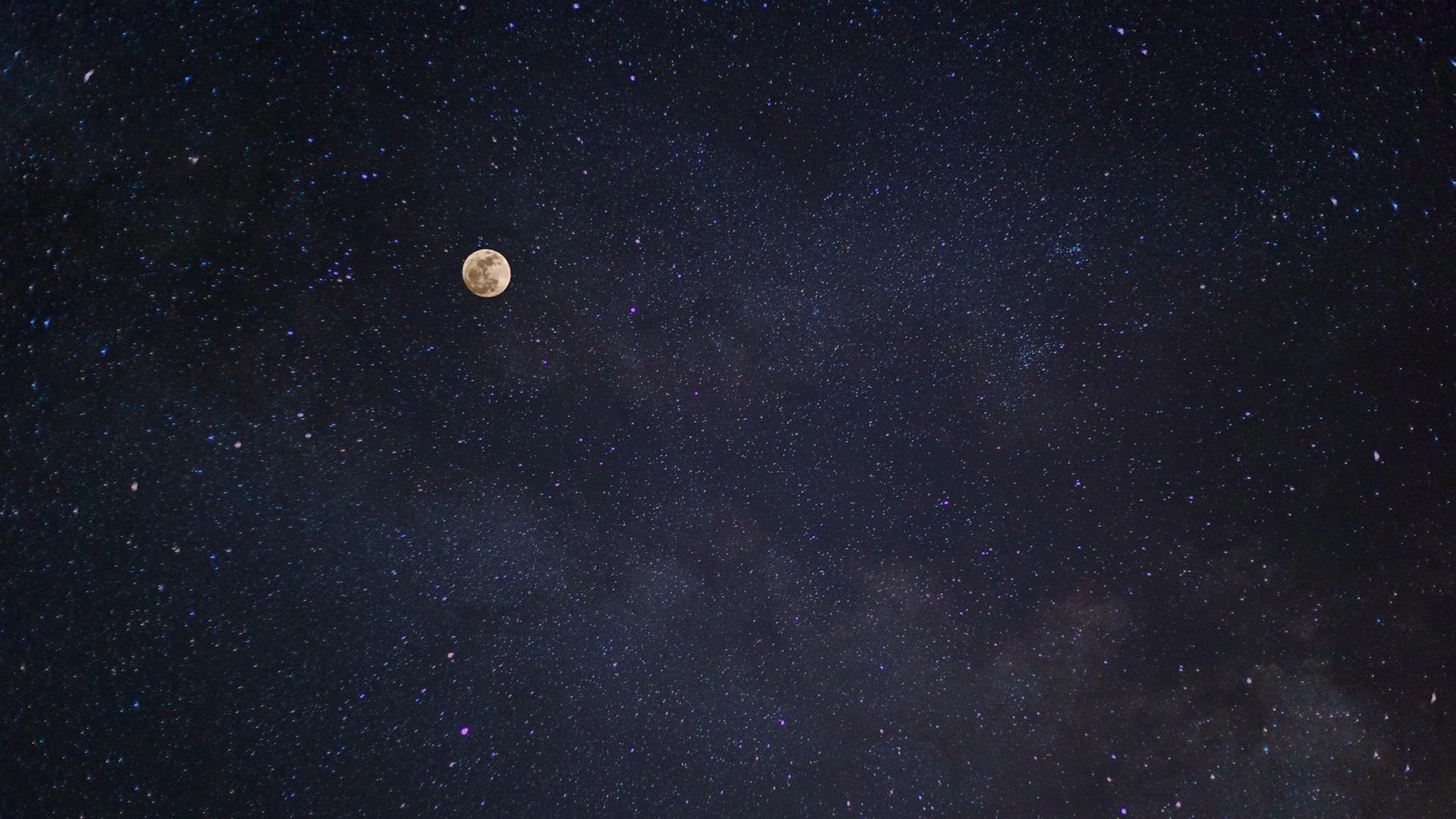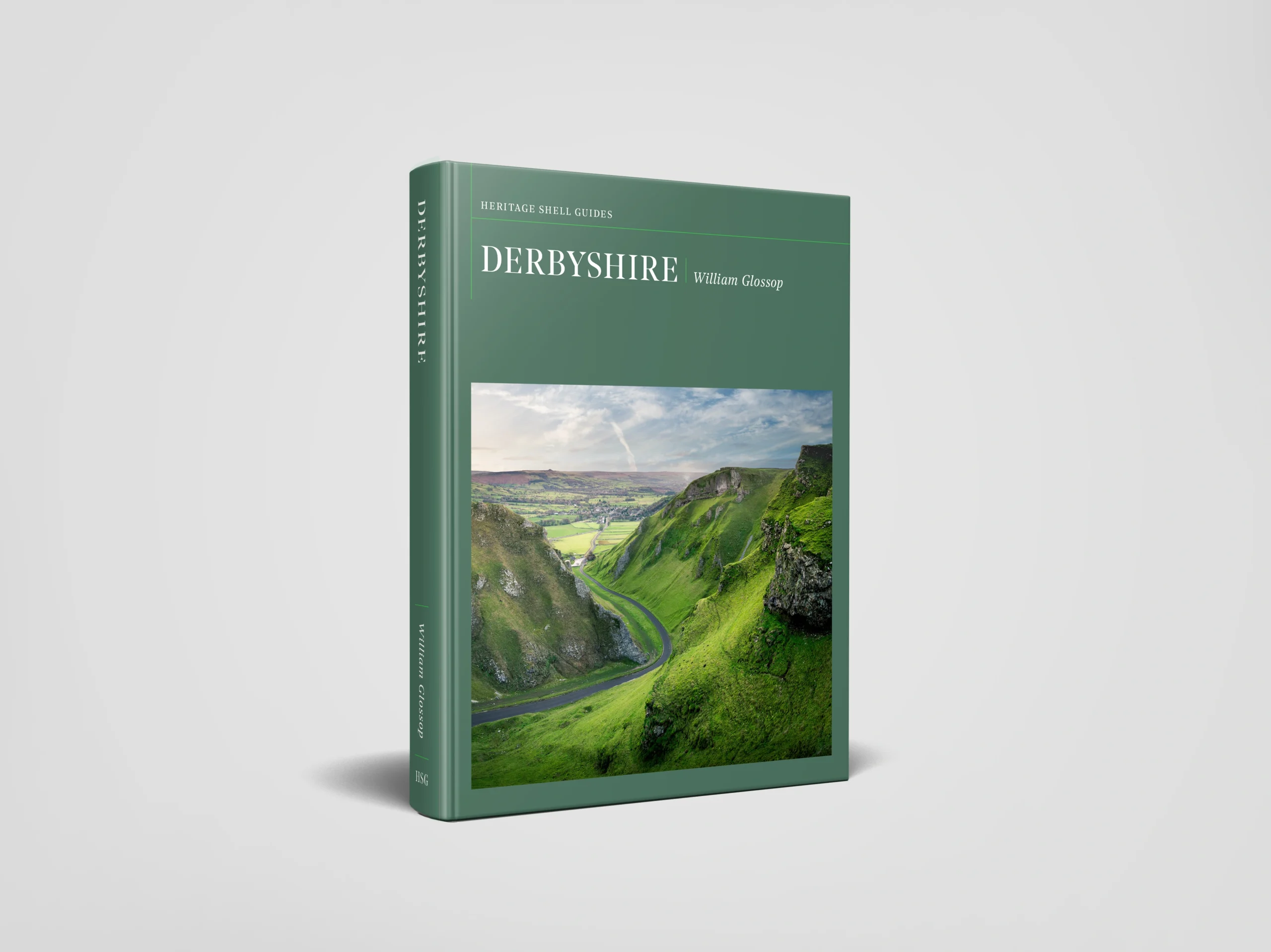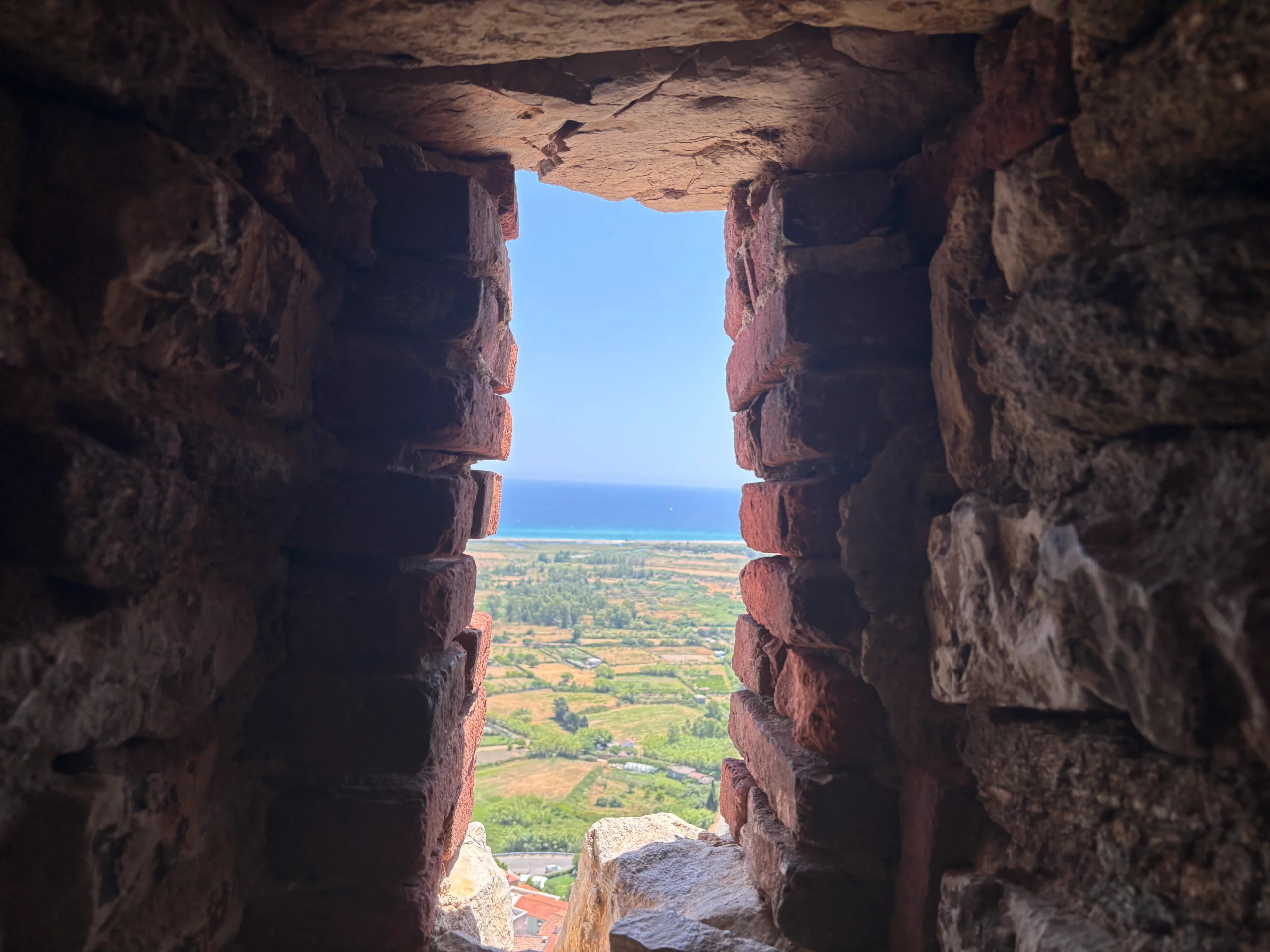December night sky guide: what to look for and where to find it

Omara Williams
- Published
- Lifestyle
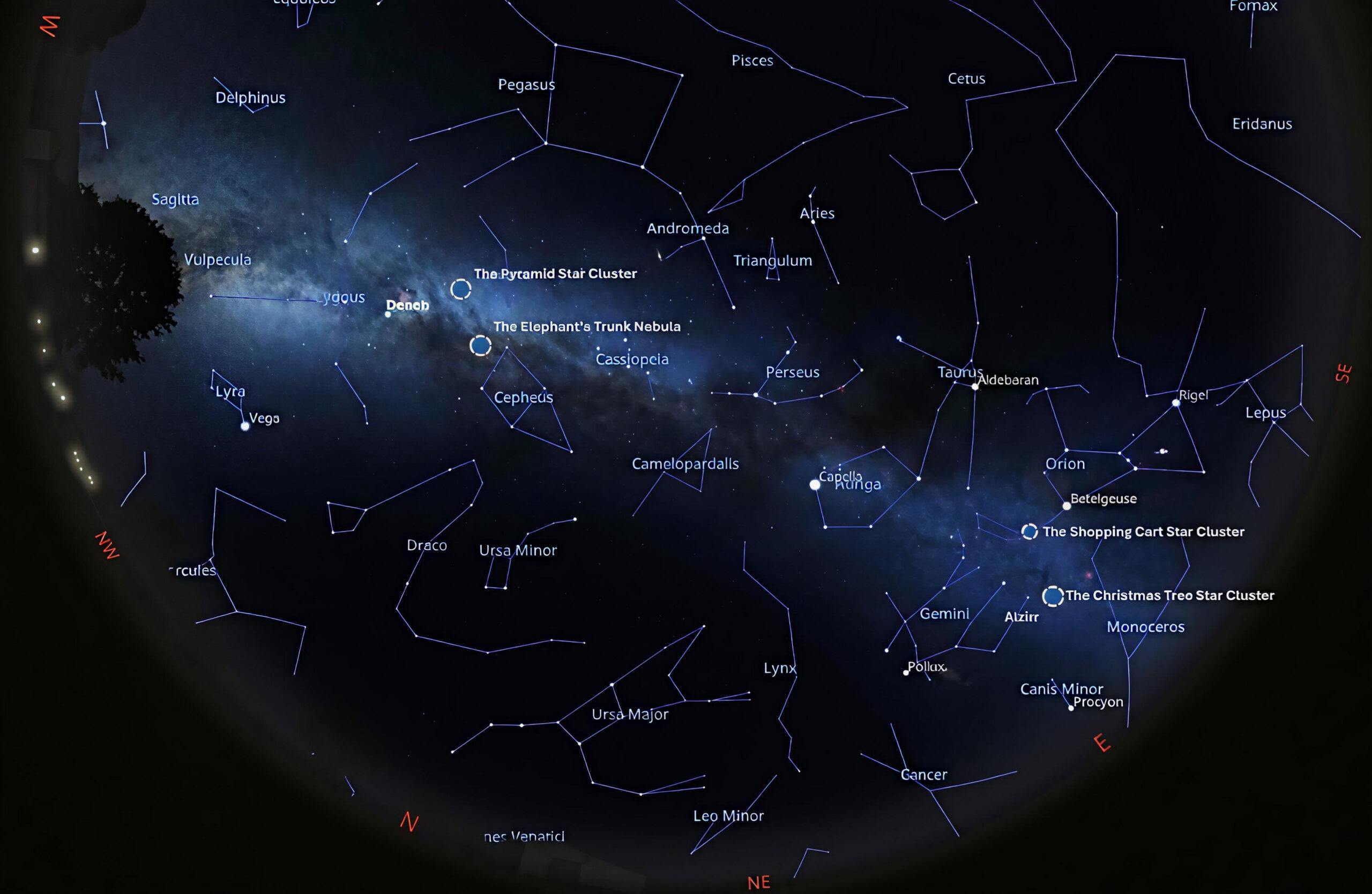
In the ninth instalment of her stargazing series, author Omara Williams guides readers into the December night sky — a season of brilliant winter constellations, festive star clusters and celestial wonders that welcome the New Year
The December night sky invites stargazers to marvel at the brilliant winter constellations, all visible at once in the east: Auriga, Taurus, Orion, Gemini, Canis Major and Canis Minor. Even the Summer Triangle has not entirely disappeared; Vega is near the horizon in the northwest, while Deneb, located further north, is higher in the sky and clearly visible.
In the northeastern sky, Ursa Major is ascending, revealing all the stars forming this majestic constellation. Above it, Ursa Minor gracefully hangs below Polaris, the North Star, which has long served as a guiding light for navigators.
High above, the Milky Way unfolds like a misty river, its soft glow inviting stargazers to venture into the breathtaking expanse of the universe. This celestial highway reveals a treasure trove of dazzling star clusters and vibrant nebulae, each telling its own story. As you gaze upward, you are sure to uncover a fascinating story unfolding before your eyes.
The rich diversity of celestial objects in this region of our galaxy offers a captivating experience for both amateur astronomers and seasoned stargazers alike. In this article, we will delve into these astronomical treasures, revealing their unique characteristics and the breathtaking variety that makes each one a marvel of the night sky.
As we celebrate this festive season, let’s take a moment to highlight two special celestial objects associated with Christmas: the glowing Shopping Cart and the enchanting Christmas Tree star clusters. Both of these formations grace our night sky with their brilliance and beauty, adding a touch of seasonal magic to our observations.
We begin our journey in the west with the beautiful open star cluster M39, also known as The Pyramid Cluster, a loosely scattered group of primarily young blue-white stars. Moving eastward, we come across IC 1396 A, the Elephant’s Trunk Nebula, an elongated globule of interstellar gas and dust where hot, blue stars are forming, all set within a bright emission nebula. Continuing our exploration to the east, we encounter the striking NGC 2169, the Shopping Cart cluster, also known as the ’37’ cluster for its distinctive shape. Finally, we arrive at the remarkable NGC 2264, the Christmas Tree cluster, where dust clouds surround an active region of star formation, forming a triangular shape that glows in beautiful colours.Get ready to be inspired! Grab your binoculars or telescopes and prepare to be awe-struck by the stunning views of these celestial treasures.
Find The Pyramid Cluster (M39) in Cygnus.
To locate this stunning star cluster, look northwest for Deneb, the brightest star in the Cygnus constellation, situated at the top of the prominent asterism known as The Northern Cross. From Deneb, draw an imaginary line to your right and slightly upward, across the centre of the Milky Way’s misty band. This line will guide you to a beautiful sight—a loosely scattered star cluster shimmering in deep blue, often compared to a miniature version of the more famous Pleiades cluster.
Located approximately 824 light-years away, M39 is one of the closest open clusters to Earth. Its brightness and accessible location make it an ideal target for novice stargazers. For astronomers, studying clusters like M39 is essential for understanding stellar evolution since all the stars within it formed at the same time from the same cloud of gas and dust.
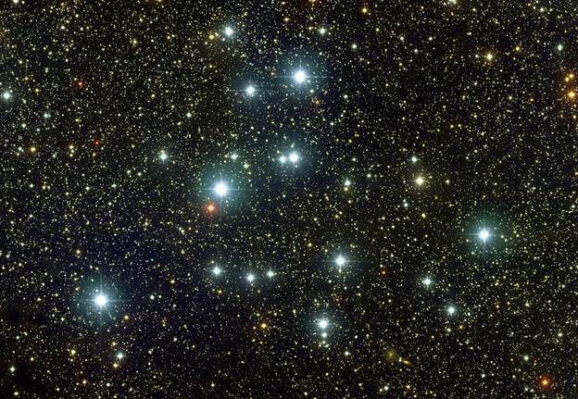
Find The Elephant Trunk’s Nebula (IC 1396 A) in Cepheus.
From M39, draw an imaginary line downward toward the east, aiming for the edge of the Milky Way’s misty band, just before reaching the house-shaped Cepheus constellation. The Elephant’s Trunk nebula is quite faint, even when viewed through binoculars. To appreciate its intricate details, a medium to large-sized telescope is recommended, ideally under dark skies, along with long-exposure images and filters to enhance its vivid features.
Located 2,400 light-years away, the Elephant’s Trunk is a 20-light-year-long cloud of gas and dust that is part of a bright emission nebula. The shaping of the Elephant’s Trunk is moulded by the intense ultraviolet radiation emitted by a massive central star, alongside the energetic outflows from newly formed stars nestled within its depths. The dynamic processes in this region generate a fascinating interplay between the forces of creation—where new stars ignite and form—and those of destruction —where the surrounding material is swept away. This nebula serves as a visible reminder of the amazing cosmic forces at work within our universe.

Find the Shopping Cart star cluster (NGC 2169) in Orion.
Looking southeast, find the bright orange star Betelgeuse in Orion. Trace an imaginary line upward through Orion the Hunter’s outstretched arm. At the bend of his arm, just below the two stars that mark this bend, you will discover a group of stars of different colours arranged in the shape of the number 37. This striking open cluster is easily observed in binoculars and small telescopes.
Located approximately3,600 light-years away, NGC 2169 is a young, distant open cluster that has captured the imagination of stargazers for centuries due to its unmistakable and memorable “37” shape. It’s a rewarding target for amateur astronomers and a valuable object of study for scientists, serving as a perfect laboratory for investigating the early lives of hot, massive stars.
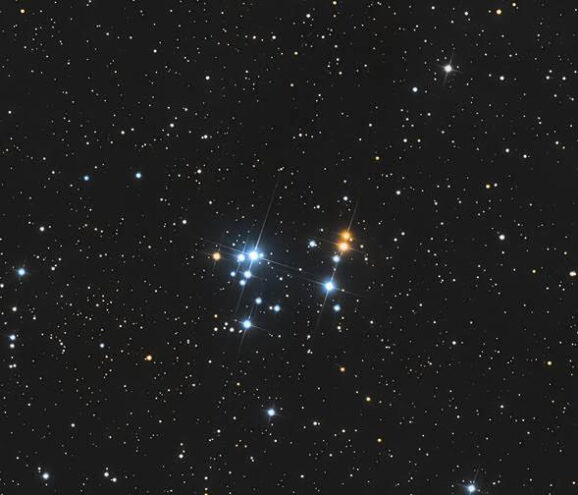
Find the Christmas Tree star cluster (NGC 2264) in Monoceros.
From Orion the Hunter’s arm, trace an imaginary line downwards, reaching slightly to the right of Alzirr, the southernmost star in the Gemini constellation. You’ll come across a fuzzy patch at one of the corners of a triangle between the bright stars Betelgeuse and Procyon. This uniquely shaped star cluster appears somewhat featureless. However, it’s with a powerful telescope and advanced image processing that this star-forming region reveals its true colours.
This extensive region is characterised by emission nebulae and several star clusters, with the Christmas Tree Cluster among the most notable objects. Located approximately 2,600 light-years away in the faint constellation of Monoceros, meaning “the Unicorn”, NGC 2264 differs from many open clusters in that it remains embedded within its original gas and dust clouds. Bright stars illuminate the nebulae and dust lanes, creating striking silhouettes for a truly breathtaking view.

Night Sky Events in December
December brings us the highest-in-the-sky Supermoon of the year, the stunning Geminids meteor shower, rivalling the August Perseids, and the Moon visiting Jupiter, Saturn, and The Pleiades. We celebrate the winter solstice, looking forward to renewal, and the sky dons its brightest colours to welcome the New Year with us.
December 4 – Full Moon (Cold Moon)
This is the last Supermoon of the year, occurring near the winter solstice, which means the longest night. It will also be the highest Full Moon until 2042, making it visible for most of the night, free of obstructions. Watch the Moon rising in the northeast after 3 p.m., then shining brightly to the left of the beautiful Pleiades star cluster from 5 p.m. until dawn. Enjoy this excellent viewing opportunity!
December 7 – Moon near Jupiter and Castor and Pollux
After 6 p.m., look toward the northeastern sky to see the waning crescent Moon rising to the left of the bright planet Jupiter and below the twin stars Castor and Pollux in the Gemini constellation. This grouping will remain visible until the early hours of the morning, creating an unforgettable sight.
December 14 – Peak of the Geminids meteor shower.
The bright, slow-moving fireballs from the Geminids meteor shower can reach up to 120 meteors per hour, rivalling the August Perseids. With the thin waning crescent Moon not rising until 2:15 a.m. and then staying low, viewing conditions are ideal for a spectacular event. Look high in the sky towards the south after midnight, above the bright star Castor in the Gemini constellation and brilliant Jupiter, for a promising display of shooting stars.
December 21 – Winter Solstice.
The winter solstice is the shortest day and longest night of the year, marking the moment when the Sun is at its lowest point in the sky, signalling the beginning of Astronomical Winter. On this day, the Earth’s axis is tilted farthest away from the Sun. Following the winter solstice, the Earth’s axis gradually tilts back towards the Sun, leading to longer days, as we look forward to the extended daylight in the upcoming months while drafting our New Year’s resolutions.
December 23 – Peak of the Ursids meteor shower
This sparse meteor shower, with a maximum rate of 10 meteors per hour, is sometimes forgotten, given the impressive Geminids’ peak a week earlier. This time, we have excellent viewing prospects with the New Moon occurring two days before and its easy-to-spot location next to the Ursa Minor constellation. Look high in the sky towards the north after midnight. The Ursids are definitely worth watching!
December 27 – Moon near Saturn
The waxing crescent Moon shines to the left of bright Saturn in the eastern sky after 5 p.m. This stunning duo moves across the sky beneath the Square of Pegasus asterism, eventually disappearing below the western horizon after 10 p.m. This gives us plenty of time to admire their beautiful cosmic pairing.
December 31 – Moon near Pleiades
The waxing crescent Moon once again graces the skies beside the beautiful Pleiades star cluster. Visible to the right of the cluster in the eastern sky after 5 p.m., it draws the eyes of stargazers. As midnight approaches, the night sky becomes even more vibrant, revealing a dazzling collection of celestial wonders. The bright stars Sirius, Rigel, Betelgeuse, Procyon, Aldebaran, Capella, and the brilliant planet Jupiter all make an appearance, their sparkling light creating a stunning backdrop for both the Moon and the Pleiades. The heavens seem dressed in their finest, celebrating the arrival of the New Year with style and splendour. Take a moment to step outside and marvel at this magnificent sight!

Omara Williams is a nuclear and software engineer whose multi-award-winning debut science-fiction novel, The Space Traveller’s Lover, shot to international bestseller status. Outside of her literary pursuits, she enjoys stargazing and chasing total solar eclipses.
READ MORE: Explore more from Omara Williams: Catch up on the full Stargazing with Omara Williams series here and discover what to watch in every month’s night sky.
Do you have news to share or expertise to contribute? The European welcomes insights from business leaders and sector specialists. Get in touch with our editorial team to find out more.
Main image: Supplied
Sign up to The European Newsletter
RECENT ARTICLES
-
 Four Seasons Yachts reveals overhauled 2027 Mediterranean programme
Four Seasons Yachts reveals overhauled 2027 Mediterranean programme -
 The European road test: MG’s new electric flagships, the Cyberster and IM5
The European road test: MG’s new electric flagships, the Cyberster and IM5 -
 Historic motorsport confronts its energy future
Historic motorsport confronts its energy future -
 Protecting the world’s wild places: Dr Catherine Barnard on how local partnerships drive global conservation
Protecting the world’s wild places: Dr Catherine Barnard on how local partnerships drive global conservation -
 We ditched Cornwall for North Norfolk — and found a coast Britain forgot
We ditched Cornwall for North Norfolk — and found a coast Britain forgot -
 How BGG became the powerhouse behind some of the world’s biggest wellness brands
How BGG became the powerhouse behind some of the world’s biggest wellness brands -
 Exploring France’s wildest delta: Julian Doyle on the trail of white horses, black bulls and the hidden history of the Camargue
Exploring France’s wildest delta: Julian Doyle on the trail of white horses, black bulls and the hidden history of the Camargue -
 “Embarrassment is killing men”: leading cancer expert warns stigma hides deadly truth about male breast cancer
“Embarrassment is killing men”: leading cancer expert warns stigma hides deadly truth about male breast cancer -
 Diving into… Key West, Florida
Diving into… Key West, Florida -
 Nick Mason leads celebrity line-up at London Motor Week
Nick Mason leads celebrity line-up at London Motor Week -
 The simple checks every man should do for breast cancer
The simple checks every man should do for breast cancer -
 Concerto Copenhagen marks Danish EU presidency with gala at Bozar
Concerto Copenhagen marks Danish EU presidency with gala at Bozar -
 What effective addiction treatment looks like today
What effective addiction treatment looks like today -
 NOMOS Glashütte named Germany’s best sports watch brand 2025
NOMOS Glashütte named Germany’s best sports watch brand 2025 -
 Stars, supermoons and shooting fireballs: why November’s sky is unmissable
Stars, supermoons and shooting fireballs: why November’s sky is unmissable -
 “Derbyshire is both a treasure and a responsibility” — William Glossop on the New Heritage Shell Guide
“Derbyshire is both a treasure and a responsibility” — William Glossop on the New Heritage Shell Guide -
 Inside the Maldives’ most exclusive getaway
Inside the Maldives’ most exclusive getaway -
 Tripadvisor says this is one of the best hotels on Earth — we went to see for ourselves
Tripadvisor says this is one of the best hotels on Earth — we went to see for ourselves -
 Britain’s most storied guidebook series returns with a Derbyshire volume that mixes celebration with stark warnings of industrial devastation
Britain’s most storied guidebook series returns with a Derbyshire volume that mixes celebration with stark warnings of industrial devastation -
 Michelin shortlists Croatia’s Villa Nai 3.3 as one of the world’s best-designed hotels
Michelin shortlists Croatia’s Villa Nai 3.3 as one of the world’s best-designed hotels -
 Drive your own safari: why Kruger is Africa’s most accessible wildlife park
Drive your own safari: why Kruger is Africa’s most accessible wildlife park -
 Oggy Boytchev on Sardinia, an island of contrasts
Oggy Boytchev on Sardinia, an island of contrasts -
 At the edge of Europe. A cruise gateway on the Russian frontier
At the edge of Europe. A cruise gateway on the Russian frontier -
 The European Reads: What a 2,000-year-old philosophy can teach us about power
The European Reads: What a 2,000-year-old philosophy can teach us about power -
 Bicester Motion October 2025 Scramble: 2025’s final ode to British motoring culture
Bicester Motion October 2025 Scramble: 2025’s final ode to British motoring culture






